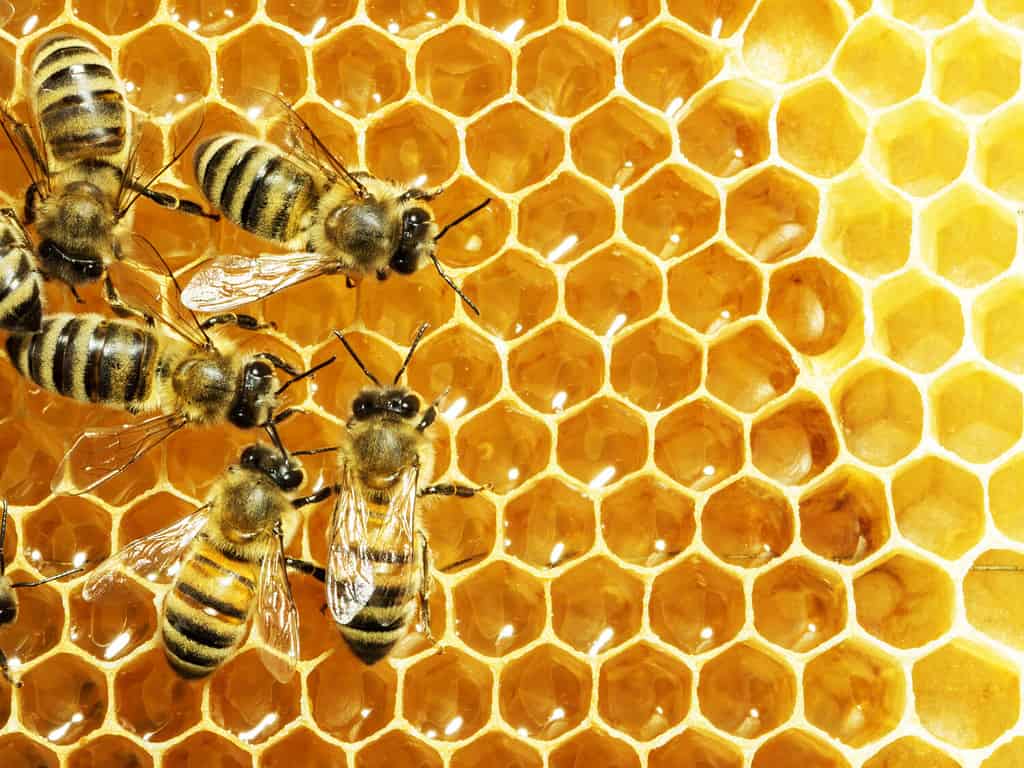Continue reading for our analysis...

The dimensions of this bee nest and the honeycomb they have created are staggering. Millions of them swarm around as the brave honey collectors slice off parts of the honeycomb. The structure is fascinating and contains an awful lot of honey!
Why Do Bees Make Honey?
Bees make honey for the same reasons that our ancestors made jam. It is a way of preserving the abundance of food available in the summer to sustain them during winter. Bees feed primarily on nectar (a source of carbohydrates) and pollen (a source of protein) produced by flowers, but there are fewer flowers around during the winter, hence less food. If they tried to store nectar, it would ferment, so they needed to turn it into honey.
How Do Bees Make Honey?

Honey starts as nectar.
©StudioSmart/Shutterstock.com
Honey starts as nectar. This comprises three types of sugars: glucose, fructose, and sucrose. However, it is up to 80 percent water and contains some scent chemicals to attract bees to the flower.
The bees suck up the nectar through their tongue, which is specially shaped for this purpose. It is called a proboscis and has a hollow center. The honey enters the first chamber of the bee’s stomach, where it is broken down into simple sugars. It is transported back to the hive, where it is regurgitated and passed from one worker bee to another, mouth to mouth. As this happens, the water evaporates, and the nectar becomes more concentrated. Once the water content reaches 18%, mold and bacteria can no longer grow, and the nectar becomes honey. It is pushed into wax chambers, which we call honeycombs.
Where Do Bees Normally Live?
There are more than 20,000 species of bees; of them, 4000 are native to the United States. Some well-known examples are the bumble bee and the honeybee. They evolved over 100 million years ago from a type of predatory wasp. They are found worldwide except for Antarctica and are located in any habitat with flowering plants. Bees rely on these plants as their source of nutrition.
Some types of bees are communal. For example, the honeybee lives in hives dominated by a queen. These are highly organized social colonies where everybody has a purpose and job. Others live solitary lives and build their own nest where they raise their larvae.
Thank you for reading! Have some feedback for us? Contact the AZ Animals editorial team.






